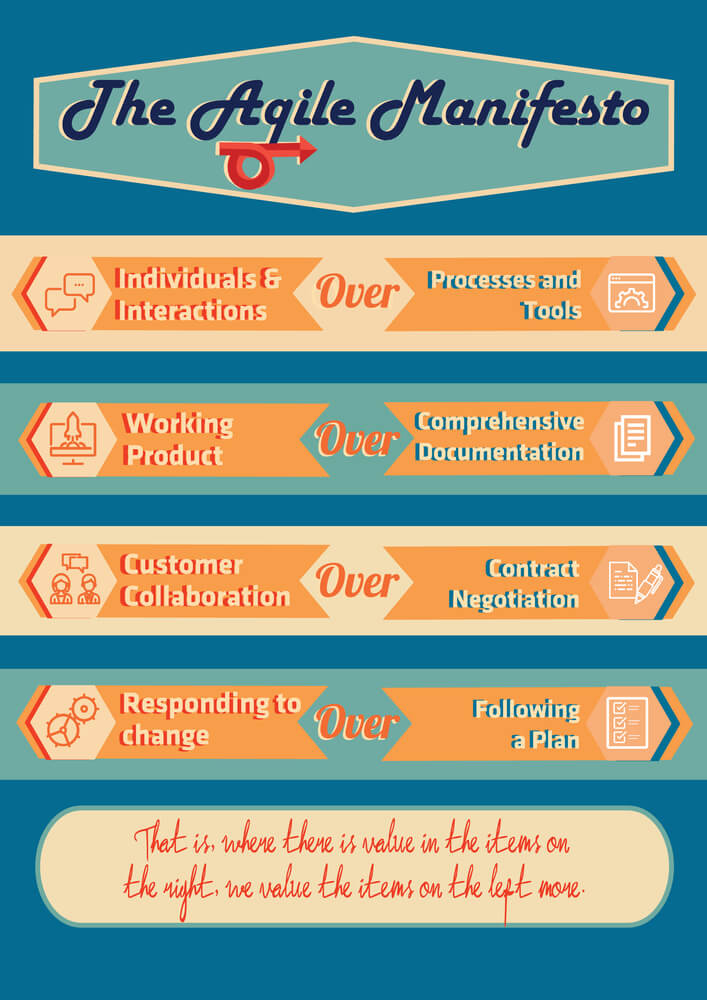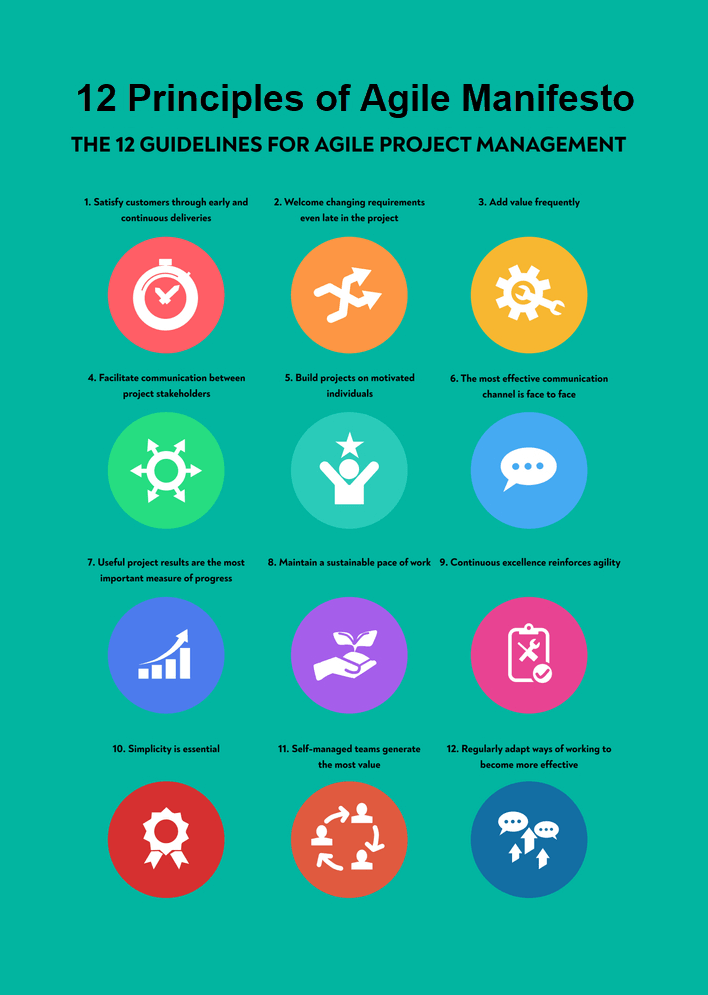All agile practitioners must be aware of the Agile Manifesto. It is the cornerstone of the agile methodology that depicts the values and principles that will guide modern agile practitioners in project management or software development. The agile manifesto has 4 values and 12 principles. These guidelines are universal and are accepted by all agile practitioners, globally. Originally developed, by a group of developers in 2001, the agile manifesto eventually gained popularity due to its precision and approachability. Today, modern agile project management and software development cannot function without the knowledge of the values and principles described in the agile manifesto.
Jump ahead to
Purpose of Agile Manifesto
The Agile Manifesto is nothing but a document that contains the guidelines for working in modern software development and project management using the 4 values and 12 principles. The original creators of the agile manifesto defined their reasons for developing this document to improve traditional software development by transforming it into a modern approach. This modern approach of agile methodology introduced complete freedom to make changes to the project or software development processes at any stage according to the need of the hour. While in traditional project management, processes once in motion could not be altered, the agile manifesto allowed project managers and agile practitioners this freedom.
The agile framework created using the agile manifesto allowed greater involvement of the end-users or customers of the organization. Products and services created by the organization strived to satisfy the expectation of the customers rather than just meet the organizational requirements. This revolutionary mindset also known as agile thinking helped organizations around the world create products or develop software that met the user requirement and led to value-creation. The value that is created using the agile approach of project management and software development is long-term. This also leads to greater confidence of the existing customers in the organization and helps in building a new customer base.
What are 4 Values of Agile Manifesto

The agile manifesto that is used in today’s modern project management and software development started with four core values. They are:
Individuals and interactions over processes and tools
The first value stated in the Agile Manifesto asks organizations involved in the creation of products or development of software to prioritize their end-users or customers. An agile approach is a user-first approach. Organizations need to take in customer feedback promptly and use this information to develop their products and software.
Working product/software over comprehensive documentation
The second core value of agile framework identifies the creation of the software or product according to customer feedback. This is a change from the traditional process of project management and software development where more importance was given to documentation of individual processes rather than the result.
Customer collaboration over contract negotiation
The first core value of the agile manifesto established that customer collaboration trumps all processes and tools in the organization. The third value reaffirms the fact that the customers will play an important role in all processes of project management or software development. This helps in creating products or software that will meet the customer requirements and help increase the overall productivity of the organization.
Responding to change over following a plan
Traditional project management was all about the project plan. If the planning goes wrong, the whole project goes down. The agile methodology and agile manifesto depict that following a plan is fine if there is a scope for making alterations according to the situation. Change is inevitable, project managers and agile practitioners must be ready to adapt to the changing requirements of the project.
What are 12 Principles of Agile Manifesto

The Agile Manifesto defines the 12 principles for project managers and agile practitioners to work with using the agile methodology. These are as follows:
Prioritize continuous delivery of the product through value creation
Value is created when the customers of the organization are satisfied with the continuous delivery of the product or software.
Completing projects on time by breaking down the work into small manageable tasks
Dividing the whole project into small manageable tasks also known as Sprints. It will help product or software development teams to complete the project on time.
Self-organized teams have better success-rate and are free to make decisions that will help complete the tasks easily
Self-organization helps in greater freedom in the decision-making process. This allows the product or software development teams to function better and successfully finish the project.
Give importance to greater collaboration between stakeholders and project management teams
The agile framework asks for greater collaboration between stakeholders and agile project management teams, which helps eliminate confusion and clears doubts regarding the project.
Create a supportive work environment that encourages individual participation
It is important to create a supportive work environment for project management teams who feel included in the success or failure of the project. These motivated individuals will work harder and strive to achieve the project objective.
Monitoring the progress and schedule of the project by using tools and techniques
Visualization of the workflow using tools and techniques like Kanban and Scrum will help project managers and agile practitioners monitor the progress and schedule of the project.
Maintain the quality of the product or software by improving and measuring each process
The highest level of quality in the end-product or software can be achieved when the quality of each product or software development process is maintained.
Conducting meetings at regular intervals to discuss the progress of the project and analyzing its needs
Scrum Meetings and Sprint planning meetings are an integral part of the agile framework. These meetings which are conducted at regular intervals. This help the agile scrum project managers and the project management teams discuss the progress of the project and analyze the various needs of the project at different stages of its progression.
Giving scope for change at any stage of the project or product development process
Meetings conducted in agile methodology also allow project managers managing changes with agile methodology to the product or software development process at any stage.
Focus on continuous improvement through value creation activities
Reaching the end objective of meeting the customer requirement means that the entire business process must strive for continuous improvement. This can be achieved by employing value creation activities in the product or software development process.
Promote overall productivity through sustainable means
Sustainable efforts and focusing on long-term objectives helps organization to achieve overall productivity. Short-term goals are harmful for the organization and halt the growth of the entire organization.
Conclusion
The 12 principles of the agile manifesto are based on the 4 core values. They provide the guiding principles that project managers and agile practitioners must follow to achieve the organizational objectives. The agile methodology which also includes Scrum has been used in several organizations irrespective of the nature of the industry. Learning about the agile manifesto and adopting the agile mindset will be highly beneficial for aspiring project managers and agile practitioners. PMI’s PMI-ACP Certification is designed to validate a professional’s knowledge in the agile framework. Earning this prestigious credential and gaining training through a verified Agile Certification Training provider will help aspiring agile practitioners get better job opportunities. These professionals will be able to transform the entire organization functions using their superior skills in utilizing agile thinking in practice.



